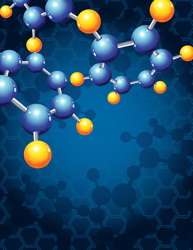High-yield selective synthesis of specific molecules

Organic chemists seek synthesis reactions that produce high yields of very pure products. European researchers have developed novel synthetic reactions for a class of compounds particularly relevant to potential drug therapies.
Although chemistry has advanced tremendously, one sticky issue in obtaining pure products is the existence of two different forms of the same molecule, enantiomers that are non-superimposable mirror images of each other. The small difference in position of certain atoms can play a critical role in functionality and generally only one of the two is desired for a given purpose.
Asymmetric synthesis, enantioselective synthesis and chiral synthesis all refer to the selective production of only one of two enantiomers. It is a very important chemical reaction type and organic chemists constantly seek new methods in order to achieve it with specific molecules.
European researchers supported by funding of the ‘Asymmetric Brønsted acid catalysed cyclisation reactions’ (Abaccr) project set out to develop such mechanisms to selectively produce a class of compounds, azabicyclic structures, from readily available starting materials. This is particularly important for the treatment of diseases.
Researchers sought to explore enantiomer-selective reactions producing ring structures (cyclisation reactions) by exploiting the high reactivity of nitrogen acyl (N-acyl) iminium ions in a chiral acid-base solution (Brønsted hyaluronic acid (HA) and its conjugate base).
Organic intermediates play an important role in synthetic transformations but their high reactivity can make them difficult to control. Brønsted HA, a chiral catalyst, applied in a solution of starting material results in formation of highly reactive N-acyl iminium ions that pair with the chiral conjugate base of HA. This pairing of the intermediates enables highly enantioselective irreversible cyclization.
Scientists successfully carried out the reaction and demonstrated that it could be extended to a wide range of substrates (starting materials). They further investigated a two-catalyst method for producing Beta-carboline compounds that could have important impact on numerous asymmetric catalysis methods employing binol phosphoric acids.
Overall, the Abaccr project team contributed a variety of highly selective asymmetric catalysed cyclisation synthesis reactions of commercial importance in drug therapies.
Provided by CORDIS
















